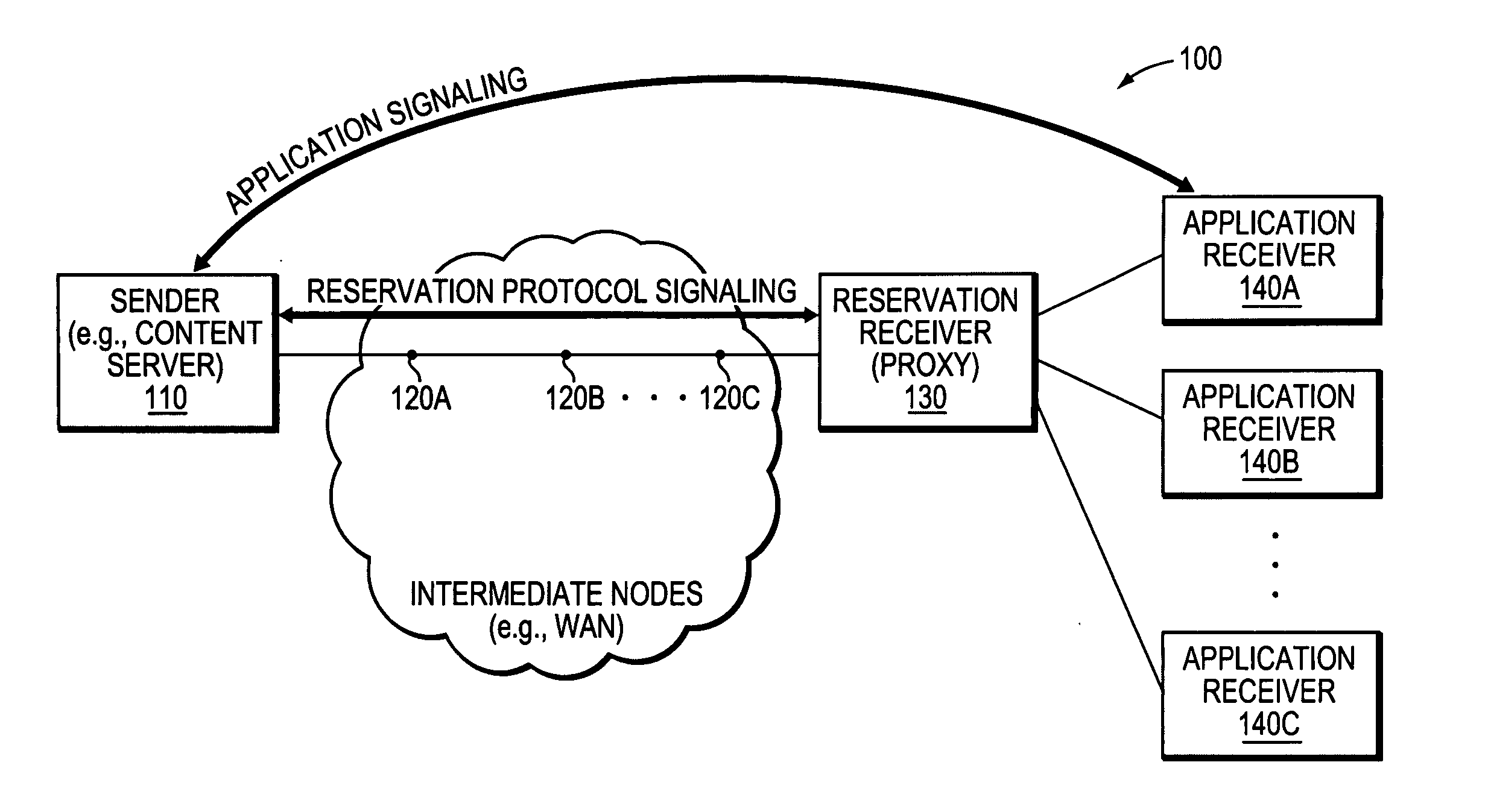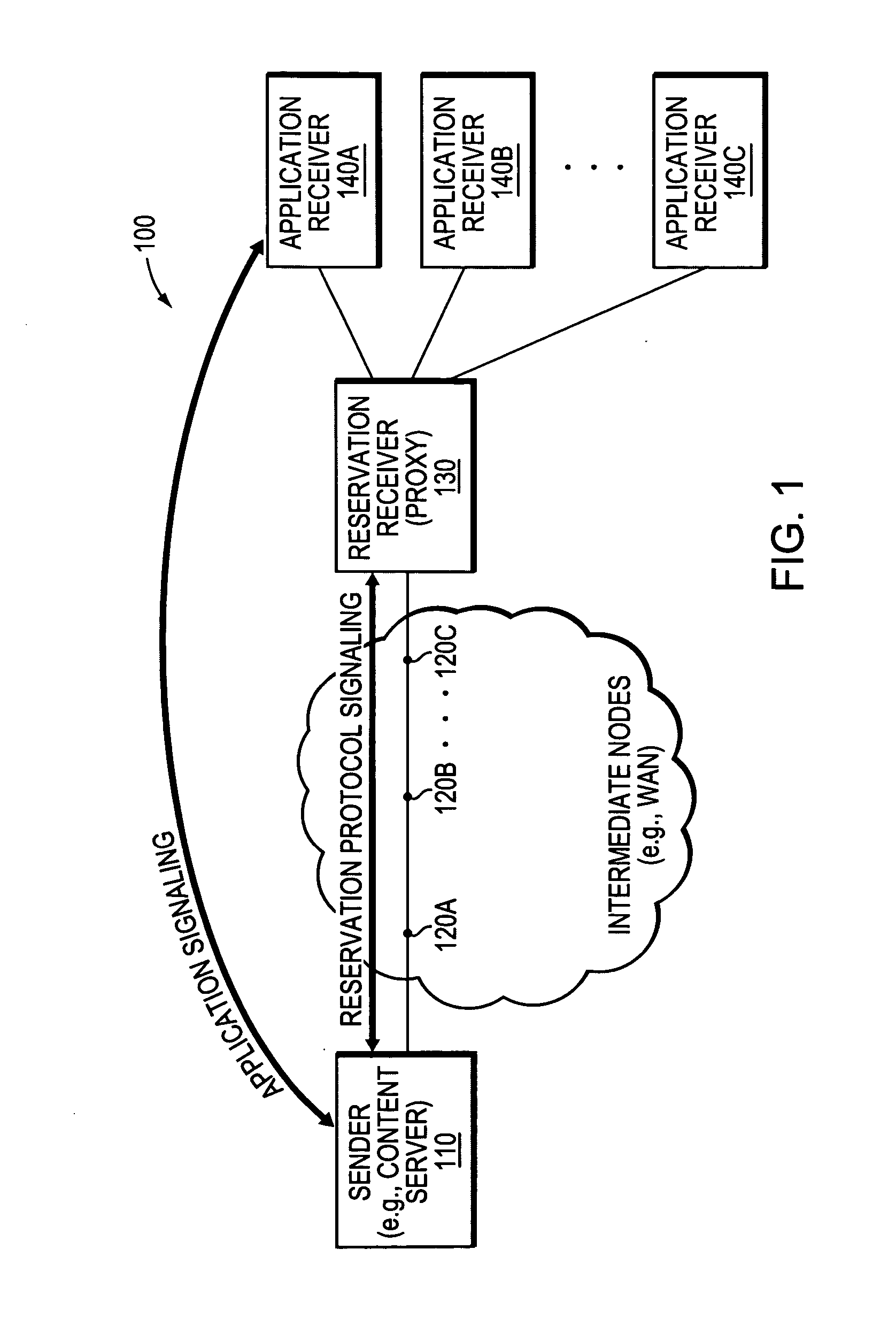Facilitating application synchronization with a reservation protocol at a sender without application receiver participation
a technology of application receiver and reservation protocol, applied in the field of computer networks, can solve the problems of inability to participate in resource reservation, and inability to effectively communicate synchronizing messages with the sender, etc., and achieve the effect of facilitating application synchronization and reducing the processing of failure notifications by intermediate nodes
- Summary
- Abstract
- Description
- Claims
- Application Information
AI Technical Summary
Benefits of technology
Problems solved by technology
Method used
Image
Examples
Embodiment Construction
[0033]FIG. 1 is a schematic block diagram of an exemplary computer network 100 that may be advantageously used with the present invention. The network 100 comprises a plurality of interconnected network nodes, such as a sender node 110 (e.g., a content server), a reservation receiver node 130 (e.g., a proxy) and one or more application receiver nodes 140A-C. Illustratively, the sender 110 and reservation receiver 130 may be interconnected by one or more intermediate nodes 120A-C, such as, e.g., over wide area network (WAN) links (or local area network, “LAN” links, point-to-point links, wireless LANs, etc.), to form the network 100. Those skilled in the art will understand that any number of nodes, links, etc., may be used in the computer network 100 and connected in a variety of ways, and that the view shown herein is for simplicity.
[0034]FIG. 2 is a schematic block diagram of an exemplary node 200, which is illustratively a router that may be advantageously used with the present ...
PUM
 Login to View More
Login to View More Abstract
Description
Claims
Application Information
 Login to View More
Login to View More - R&D
- Intellectual Property
- Life Sciences
- Materials
- Tech Scout
- Unparalleled Data Quality
- Higher Quality Content
- 60% Fewer Hallucinations
Browse by: Latest US Patents, China's latest patents, Technical Efficacy Thesaurus, Application Domain, Technology Topic, Popular Technical Reports.
© 2025 PatSnap. All rights reserved.Legal|Privacy policy|Modern Slavery Act Transparency Statement|Sitemap|About US| Contact US: help@patsnap.com



